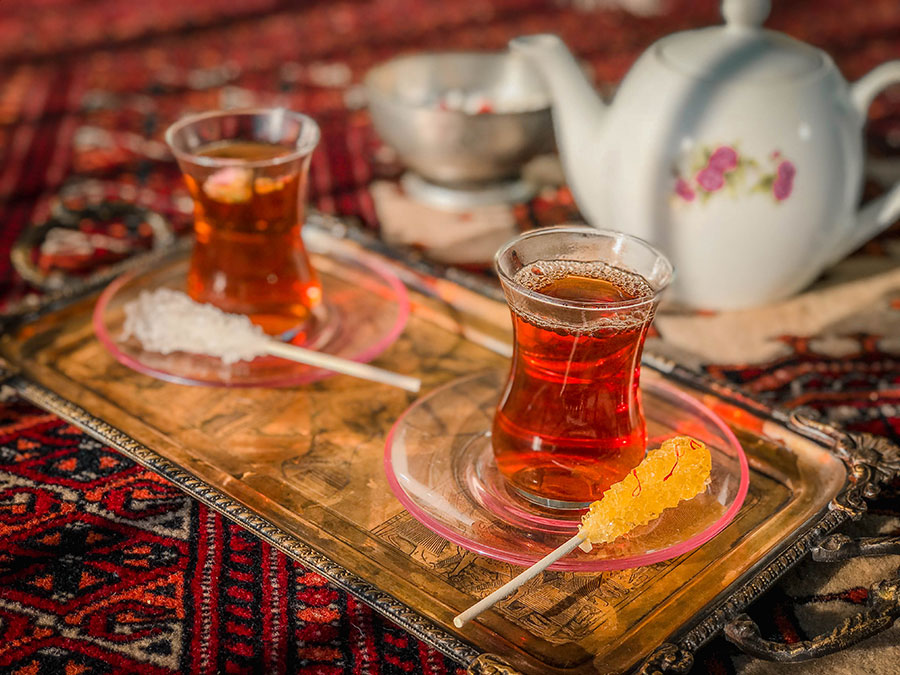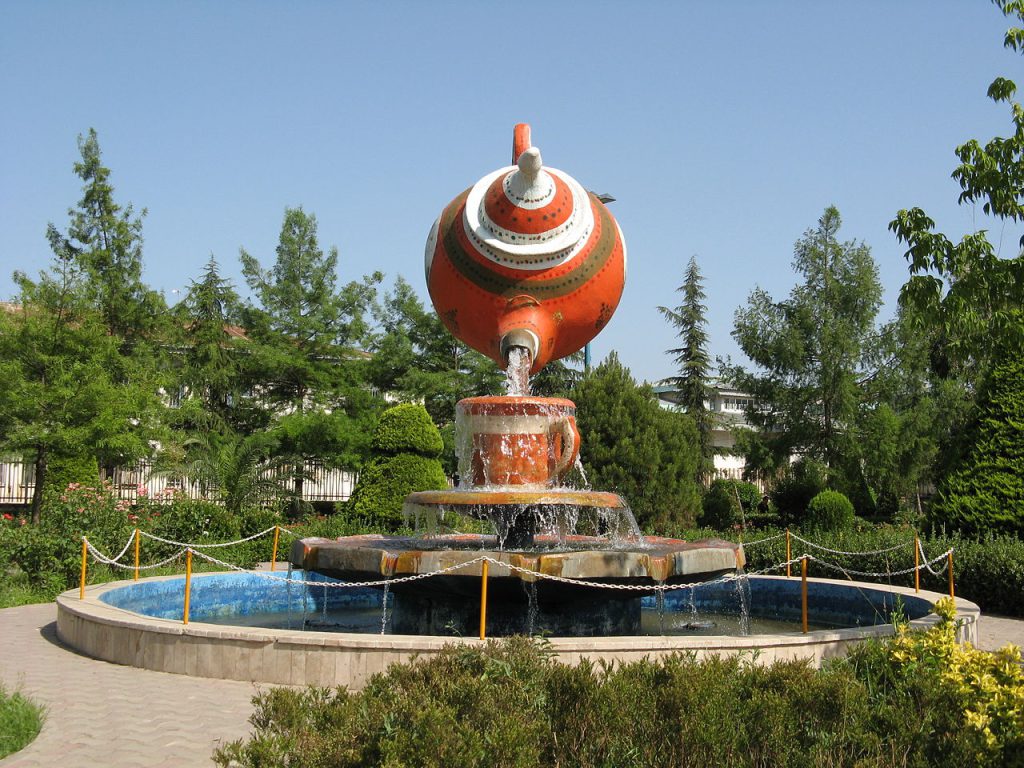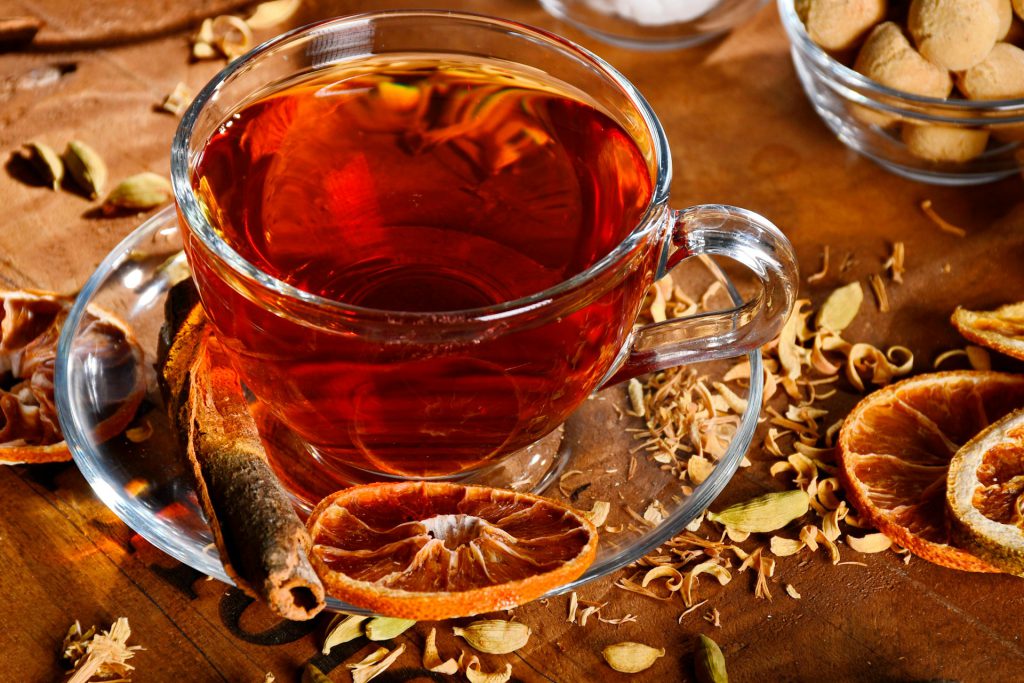Table of Contents
Exploring the world of Persian tea uncovers a rich tapestry of flavors and traditions that delight tea enthusiasts everywhere. Originating from China and thriving in Iran, Persian tea offers a diverse range of tastes, from green to black and oolong. What sets it apart is the careful process of drying the leaves and letting them oxidize, creating unique flavors and preserving the health benefits. Loved for its cultural significance and high quality, Persian tea has become a favorite choice for many, appreciated for its distinct taste and soothing qualities.
Delving into Persian tea reveals a world of simplicity and complexity intertwined. From the lush tea fields to the skilled hands that nurture and process the leaves, each step in its creation reflects centuries-old wisdom and dedication. With every sip, tea enthusiasts discover a journey of taste and tradition. Whether enjoyed alone for a moment of calm or shared among friends and family, Persian tea leaves a lasting impression, beckoning all to savor its timeless charm and embrace the warmth of Iranian hospitality.
History of Persian Tea
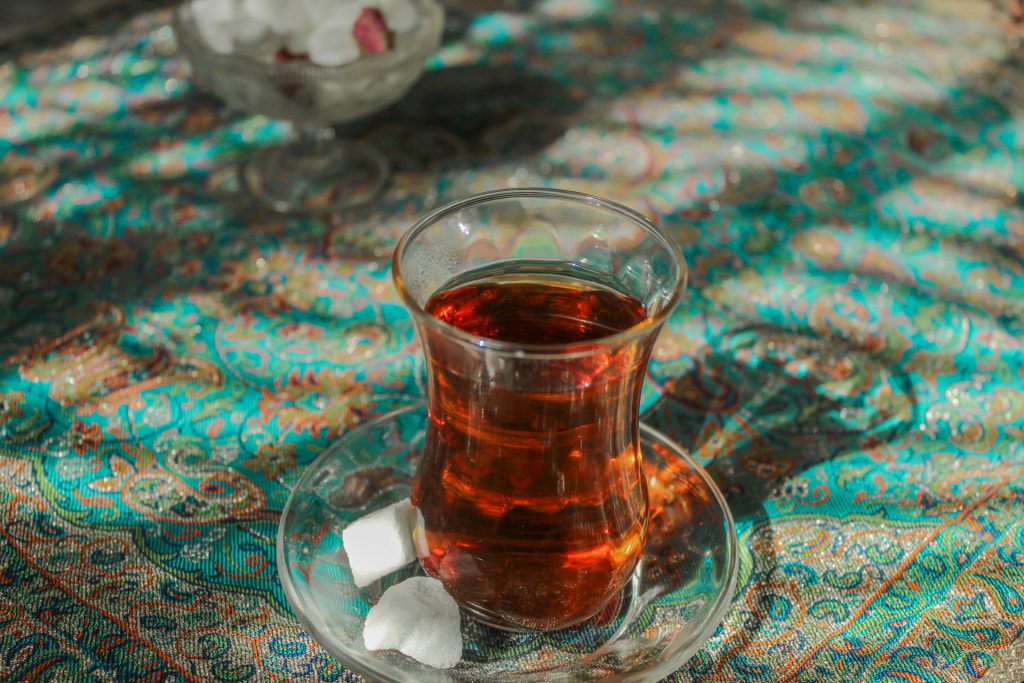
Tea made its way to Iran in the 15th century, thanks to bustling trade routes from China and India. Iranians took to this new beverage, calling it “Chay,” much like the Chinese “Cha.” Tea houses became popular hangouts, especially among the rich and powerful.
One key player in bringing tea to Iran was Kashef Al Saltaneh, an Iranian ambassador in India. He saw the potential for growing tea in Iran and worked hard to convince farmers to give it a try. Despite initial doubts, tea gardens started popping up, especially in Gilan province. The cool, mountainous climate there turned out to be perfect for growing top-notch tea.
Today, tea is a big deal in Iran. Thousands of families work in tea farming across the country, and Iranian tea is known for its high quality and natural taste. But it’s not just about economics – tea is a big part of Iranian social life. It’s served everywhere, from family homes to gatherings with friends. Whether it’s breakfast time or after a meal, tea brings people together for good times and great chats, embodying the warmth and hospitality of Iranian culture.
Persian Tea in Farsi
In Iran, tea isn’t just a drink – it’s a must-have for every part of the day. Known as “Chai” in Farsi, it’s a word borrowed from China long ago. From morning for your Persian breakfast till night, you’ll find tea cups in hand, ready to warm up any moment.
Starting your day in Iran means starting it with Persian chai tea. That first sip sets the tone for what’s to come. Throughout the day, tea keeps pace with conversations, work, and quiet times. It’s more than just a drink; it’s a chance to share stories and smiles. In Iran, Persian chai tea is more than a beverage – it’s a bond that connects people and flavors every moment with its warmth.
Benefits of Persian Tea
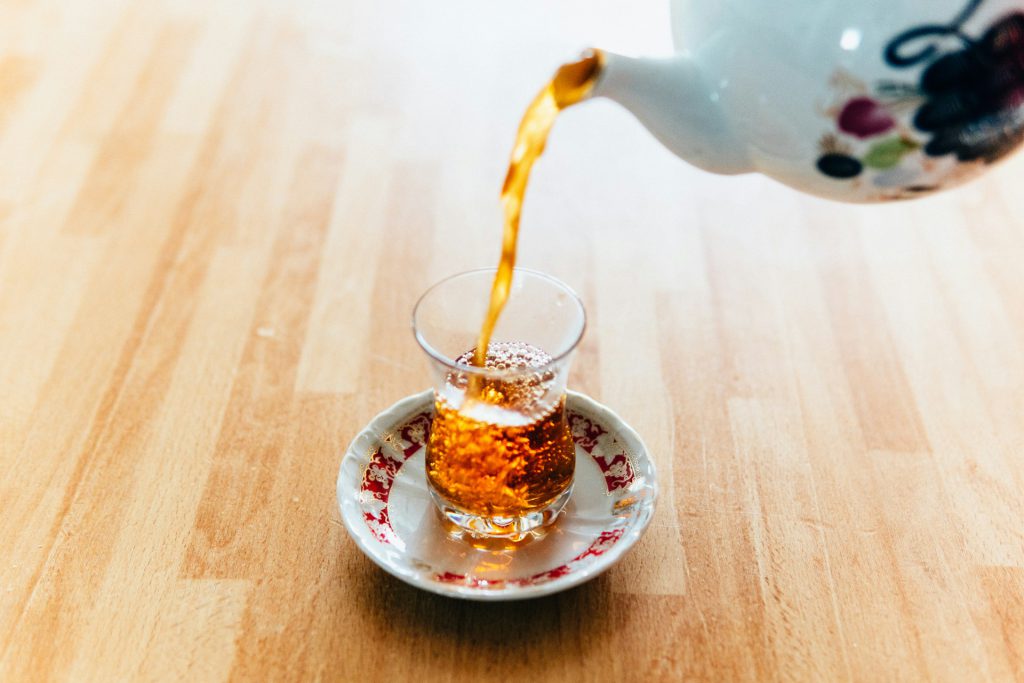
In the heart of Iran, where tea is more than just a drink but a symbol of Iran history and culture, Persian tea shines brightly when it comes to health. With just a few sips, Iran tea provides a powerful dose of antioxidants that rivals even the healthiest vegetable servings. Just imagine, two cups of this cherished elixir offer the same antioxidant boost as five servings of greens, effortlessly boosting your wellbeing.
But that’s not all; Persian tea has more to offer. It acts as a protector for your heart and arteries, helping to prevent the formation of dangerous blood clots that can harm your cardiovascular health. By simply enjoying three cups a day, you build a strong defense against heart attacks and strokes. And let’s not forget the sheer enjoyment of it all—the rich and distinctive flavor of Persian tea adds a daily moment of pleasure to your routine, making every sip a delightful experience in the midst of your busy life.
Persian Tea of Lahijan
Lahijan, the Bride of Gilan, proudly stands as the heart of Iran tea culture. Its lush tea fields sprawl across the landscape, creating a mesmerizing panorama that captures the essence of this enchanting region.
As you stroll through Lahijan’s tea fields, you’re enveloped in a profound connection with nature. Each sip of Lahijan tea tells a story of the rich soil, the gentle sway of the leaves, and the delicate balance of insects and weeds. Here, Iran tea isn’t just a drink; it’s a celebration of the harmonious relationship between humanity and the natural world. In Lahijan, brewing Iran tea is an art form, fostering a deep respect for the craftsmanship and mindfulness that go into every cup.
Different Types of Persian Tea
Black Tea
Persian Black Teas are all about strong, tasty flavors that you can’t miss. It’s like a flavor party in your mouth, from the classic taste of Earl Grey to the spicy kick of Persian Masala Chai. Each cup is like going on a flavor adventure, discovering new tastes along the way.
Drinking Persian Black Teas is like taking your taste buds on a fun ride. Whether you’re enjoying the classic Earl Grey or trying out the spicy Persian Masala Chai, each flavor is unique and exciting. It’s not just about drinking tea; it’s about having a tasty experience that makes you want more.
Green Tea
Persian Green Tea is like a burst of freshness in a cup. It’s known for its unique grassy taste and loads of good-for-you stuff called antioxidants. Drinking it is like taking your senses on a little adventure. Each sip wakes them up and makes you feel alive. It’s not just a drink; it’s like giving your body a refreshing hug.
Every time you sip Persian Green Tea, it’s like hitting the refresh button. From the first whiff of its smell to the last drop on your tongue, it’s a journey of feeling good. It’s been enjoyed for centuries, and it’s easy to see why. It’s not just tasty; it’s also good for you, packed with things that help keep you healthy. So, next time you need a little pick-me-up, reach for a cup of Persian Green Tea and let the freshness wash over you.
Saffron Tea
Think of Persian saffron tea as a beautiful blend of flavors and smells. It’s like a delicious song playing in your mouth! Picture the lovely floral notes mixing with the cozy warmth of saffron, creating a delightful combo that wakes up your taste buds. Every cup is like a work of art, made with care to make you feel good inside and out.
Making Persian saffron tea isn’t just about brewing a drink; it’s about the whole process—how the amazing smell fills the room, and the happy feeling when you take that first sip. Saffron tea isn’t just a drink; it’s a tasty way to celebrate life’s little pleasures.
Herbal Tea
Herbal teas have become incredibly popular in Iran, capturing the attention and taste buds of many. The reasons for this interest are quite diverse. Some people enjoy them for their potential health benefits, while others simply like having a different drink option in their daily routine. Additionally, herbal teas have gained popularity as a trendy beverage choice for social gatherings and events. These teas are made by drying fruits, flowers, herbs, and spices, resulting in a wide range of flavors and delightful aromas. They can serve as a healthy alternative to sugary drinks or even plain water. In this article, we’ll introduce you to some of these herbal teas and their proven effects on health.
Herbal teas offer a world of possibilities and flavors. One great advantage is that they can replace sugary drinks without sacrificing taste. Whether you prefer a tangy citrus blend, a calming chamomile infusion, or a vibrant hibiscus tea, these herbal brews provide a guilt-free treat that pleases both your senses and your body. Alongside their refreshing qualities, herbal teas have long been valued for their potential medicinal properties. They can aid digestion, promote relaxation, boost the immune system, and reduce inflammation.
How to Brew Persian Tea
Ingredients
- 1. Half a tablespoon of loose tea leaves
- 2. Two cups of freshly boiled cold water for steeping the tea leaves
- 3. An additional 6 to 8 cups of cold water for boiling
Instructions
- 1. Heat 2 cups of cold water until boiling using an electric or stovetop kettle.
- 2. Place 1 ½ tablespoons of loose tea in a teapot. Pour the hot water over the tea leaves.
- 3. Cover the teapot and put it on a cup warmer. Loosely cover the top with a folded napkin, ensuring it doesn’t touch the heated surface.
- 4. Allow the tea to steep for 10-15 minutes or until it reaches the desired color.
- 5. Meanwhile, boil 6-8 cups of fresh cold water in the electric kettle, keeping it very hot.
- 6. Use a strainer to pour about 2 ounces of the brewed tea into each tea glass, ensuring the strainer catches any floating tea leaves.
- 7. Fill each glass or Persian tea cup with freshly boiled hot water, adjusting the color according to your taste.
Additional Notes
1. Allow the tea to cool down to your preferred temperature before consuming as it will be very hot. Serve the tea with sugar cubes, sweets, pastries, or as is without any additions.
2. Sweeten your tea using sugar, honey, or other natural sweeteners according to your taste.
3. If you prefer a stronger flavor, brew the tea for a longer duration, which may result in a more bitter taste.
FAQs about Persian Tea
Q1: What is in Persian tea?
A1: Persian tea provides a variety of flavors, including green, black, and oolong. What makes it special is the meticulous method of drying the leaves and allowing them to oxidize, resulting in distinctive tastes and the preservation of its health advantages.
Q2: Why is Persian tea so good?
A2: Persian tea is well-known for its exceptional taste, delightful aroma, cultural significance, and ability to foster social connections. Its distinct and robust flavor, often brewed to be strong, along with the addition of ingredients like cardamom or saffron, contribute to its wide popularity.
Q3: Is Persian tea high in caffeine?
A3: Persian tea is prepared using different types of black tea leaves, resulting in a significant amount of caffeine in a single serving. Even a sixteen-ounce cup can contain around one hundred milligrams of caffeine.
Q4: Is Persian tea the same as Turkish tea?
A4: No, these teas vary in terms of brewing methods, the types of tea ingredients used, and the steeping time. However, they share a common feature of using loose-leaf black tea as the base ingredient.
Q5: Is Persian tea healthy?
A5: Iranian black tea not only has a delightful taste but also provides a variety of health advantages. It is rich in antioxidants, which can aid in reducing inflammation and decreasing the likelihood of chronic conditions like heart disease and diabetes. Furthermore, it may enhance brain function and increase mental alertness.
Last Words: Experience the Best of Persian Tea with a Customized Tour
Persian tea offers a wide range of delicious flavors and has special health benefits. It is popular for its unique taste and cultural significance. Whether you enjoy it alone or with others, Persian tea leaves a lasting impression and invites you to experience its timeless charm and the warmth of Iranian hospitality.
If you’re planning to travel to Iran and want to experience the best of tea as a Persian drink, it’s a great idea to go on a customized tour. Experience the art of tea ceremonies conducted by local experts and immerse yourself in the lively atmosphere of tea bazaars, where people gather to enjoy tea and share stories.
At To Iran Tour, we understand that your journey is personal and important. Join us on an unforgettable exploration of Iran tea culture. Our passionate experts will guide you every step of the way, ensuring that your trip is filled with wonder, discovery, and joy. Trust To Iran Tour to be your companions on this amazing journey, as we strive to make your time in Iran truly exceptional.

